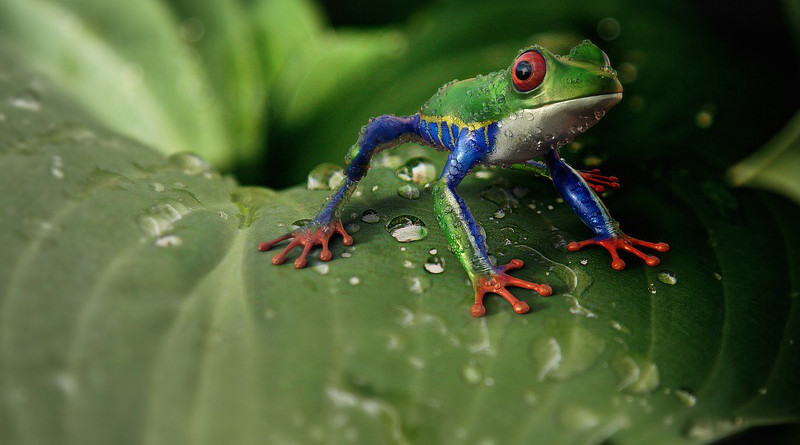Earth Day Alert To Save Our Frogs
With climate action a theme of Earth Day 2020 (22 April 2020), a new research paper highlights the plight of some of the most at-risk amphibian species – and shortfalls in most conservation efforts.
More than even birds and most mammals, amphibians (frogs, salamander, worm-like caecilians, anurans, etc) are on the front line of extinction in a hotter, dryer climate conditions.
“Amphibian populations are in decline globally, with water resource use dramatically changing surface water hydrology and distribution,” says Flinders University freshwater ecologist Rupert Mathwin, lead author of the review study published in Conservation Biology.
“Intelligent manipulation and management of where and how water appears in the landscape will be vital to arrest the decline in amphibia.”
However, many conservation measures are not enough to arrest the decline.
“Already about 41% of the species assessed (IUCN 2019) are threatened with extinction, so with continued climate change we have to be smarter about managing water to maintain critical habitats and save our threatened amphibians from extinction,” says Corey Bradshaw, Flinders University Professor of Global Ecology.
“It will be critical to use prior knowledge and change the way we share our successes and failures to find ways to save amphibians.”
The article found some key pointers for future land management: * Extending the time that water is available in temporary pools is one of the most successful approaches. Excavating, lining and pumping water into breeding ponds helps populations. * Amphibians are often limited by (mainly) fish predators, so restoring natural drying patterns outside of the main breeding times can reduce predation. * Spraying water into the environment has been attempted but appears to have limited success (see examples in Conservation Bytes). * Releasing water from dams along river channels (often termed environmental flow) can harm amphibians if high-energy water flows scour habitat features and displace larvae, and favour breeding of predators like fish.
Although perhaps counterintuitive, managers can restrict water in the landscape for amphibian conservation. This is successfully used to remove predators like fish and crayfish from breeding pools to improve breeding outcomes.
In Pennsylvania, sprinklers delivered treated wastewater through a forest reserve. Although this doubled the number of ponds available, it produced breeding habitats with poor water quality, fewer egg masses, and lower hatching success and larval survival.
Spraying was used to increase soil moisture and improve breeding conditions for a nest-breeding frog (Pseudophryne bibroni), resulting in increased calling, successful mating events and egg survival in a terrestrial nest breeder.
The researchers identified two other amphibian-conservation approaches that spray water into the environment that have not been reported:
Spraying could increase foraging opportunities (by decreasing evaporation rates), and Spraying could create moist corridors between pools to link populations or aid recolonisation. Much of Australia is drying as a result of climate change, water extraction, and landscape modification, with mass deaths of native fish hitting the headlines last summer. Environmental flows compete with agriculture and other human uses. Amphibians breathe (in part) through their skin, so they maintain moist skin surfaces. This sliminess means that most amphibians quickly dry out in dry conditions.
Additionally, most amphibian eggs and larvae are fully aquatic. One of the greatest risks to populations are pools that dry too quickly for larval development, which leads to complete reproductive failure.
“This need for freshwater all too often places them in direct competition with humans,” says Professor Bradshaw.

